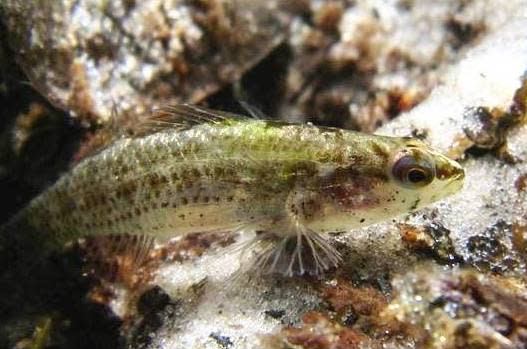Endangered no more: Okaloosa darter swims its way off the federal Endangered Species List
EGLIN AIR FORCE BASE — In 1973, President Richard Nixon signed into law the Endangered Species Act of 1973. This law ensures that animal and plant species are protected under federal law, and that the federal government makes sure conservation efforts are carried out.
The Okaloosa darter, a fish that is native to the Choctawhatchee Bay watershed, was one of the first animals that call Northwest Florida their home to be added to the protected list. Over the past 50 years, more than 1,300 species deemed endangered were added to the list.
On Wednesday at Anderson Pond near Niceville, officials from Eglin Air Force Base, the Florida Fish and Wildlife Conservation Commission and the U.S. Department of the Interior held a delisting ceremony as the Okaloosa darter was officially removed from the endangered species list.
"While this experience may be a once in a lifetime for many of us, delisting is becoming much more common," Assistant Secretary of the Interior for Fish, Wildlife, and Parks Shannon Estenoz said. "Most importantly, the Department of Defense is providing some of the most inspiring examples that you don't have to choose between mission and protection."
What is the Okaloosa darter?
The Okaloosa darter is a small, bottom-dwelling fish that can grow to only 2 inches long. Over 95 percent of the darter's habitat is located within the confines of the Eglin Air Force Base reservation, as it mainly inhabits the freshwater estuaries that join the Choctawhatchee Bay watershed.

Their diet mainly consists of mayfly nymphs, caddisfly larvae and midge larvae. They breed between March and October, with peaks in April and October.
A survey conducted in 2005 estimated the population at about 822,500. However, from 2005 to 2020 there was an estimated decrease of about 25 percent.
What are the threats to the fish?
Four primary threats contributed to the depopulation of the Okaloosa darter:
Fish Passage Barriers: These barriers prohibit the darter and many other species that live in the water from being one continuous ecosystem. These barriers disconnect the population by creating impassable water flows that inhibit the ability to reproduce.
Impoundments also impede the water quality by limiting the flow of water, which could cause water quality to decrease, concentrate predators that eat the darter, and also prevent gene flow.
Two other species of fish also caused the depopulation. With flathead catfish and blue tilapia also found in the same habitat, the passage barriers and impoundments led to darters being eaten.
With erosion caused by the building of the Falcon Golf Course and other projects on Eglin Air Force Base, the sedimentation that found its way into the ecosystem smothered the darter habitat. Toxins were also brought in from those deposits that altered the ecosystem negatively, which altered the stream hydrology.
What's next?
In the post-delisting schedule for the Okaloosa darter, Eglin Air Force Base and the U.S. Fish and Wildlife Service will conduct annual testing on threat assessments of the population. Experts will monitor sedimentation levels, invasive species and habitat fragmentation.
Fish and Wildlife, the U.S. Geological Survey, and Loyola University will conduct tests on trends, population estimates, biotic trends and water quality in periodic increments over the next five years.
More local news: $4.5 million from bed tax will be used to fund projects across Okaloosa County
"(The Okaloosa darter) evolved to have a very specific place in this ecosystem," said Estenoz. "If you want to understand the real magic and connection of the Okaloosa darter, take a 4-year-old down to the streambed and just listen and watch them when they spot an Okaloosa darter — the wonder and delight of seeing something living scurry.
"It stays delightful, but we lose that and take it for granted. You all did not take the Okaloosa darter for granted, and thank God you didn't, and many 4-year-olds in the future will see that."
This article originally appeared on Northwest Florida Daily News: Endangered Species Act success: Okaloosa darter is delisted at Eglin
